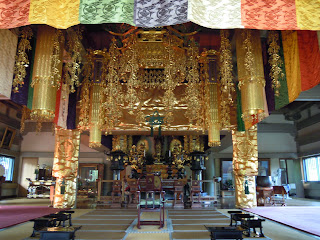It is a bit of a surprise that there is a ravine in Setagaya Ward of Tokyo.
Todoroki is in the southern part of Setagaya Ward. Beyond this green corner there is a temple.
This is the main entrance of Todoroki-fudoson Temple.
Todoroki is in the southern part of Setagaya Ward. Beyond this green corner there is a temple.
This is the main entrance of Todoroki-fudoson Temple.
The main hall of the temple
Cascades through a pair of dragons
A path through the forest
Todoroki Ravine
Benten pond and its bridge
Benten-do Hall beyond the bridge
The precinct of Todoroki-fudoson Temple
A beautiful scene from the observatory




















































